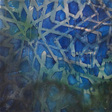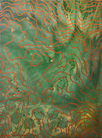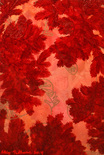Introduction
Welcome to a page for art about horse genetics. That probably seems like a strange topic for art, but it was an easy decision for me. I’ve had horses since I was 10. I still have my own horse and recently I’ve been asked to train some other horses. For my first two years in college I was a double major in art and biology. I dropped the biology because I didn’t enjoy lab work. But I never stopped learning about biology and genetics.
All the information presented here is from Horse Color Explained A Breeder’s Perspective, by Jeanette Gower. I got this book a few years ago when I was considering breeding my horse. I ended up not breeding her but learning a lot about different horse colors and how they are inherited. I selected the leopard complex as it is explained in this book because of the number of genes involved. It’s comprised of five genes that work together to create a series of spotted coat patterns. I needed at least that many genes to have enough variety for a whole art show.
Before getting started, here is a quick primer on genetics. Horses have 32 pairs of chromosomes. One set of 32 came from the dam, the other from the sire. On each chromosome are several genetic loci, or places where a particular gene is located. At each locus there may be one of several different alleles, or variations of the gene. A horse could have two of the same alleles or two different ones, depending on what the horse inherited from its parents. There are many ways that the two genes at a locus can interact. With one exception, which will be explained later, the leopard complex genes follow a simple dominate/recessive relationship. If the horse has one copy of the dominant allele, the recessive allele is not expressed at all. In this instance, and horse with one dominant allele would look identical to a horse with two copies of the dominant allele. For the recessive allele to be expressed, the horse has to have two copies of the recessive allele (Gower, 9). For more information, check the first chapter of Horse Color Explained. Horse and human genetics follow the same basic rules as far as inheritance and allele interactions go, so as an alternative to the book, do a Google search for “basic genetics”.
Note: I use “spotted” and “appaloosa” interchangeably here. Appaloosa is technically a breed. But because they are the best known spotted horse breed, it’s not unusual for people to call a spotted horse of a different breed an appaloosa. For the purposes of this show, I’m not concerned with horse breeds, just their color.
Gower, Jeanette. Horse Color Explained a Breeder's Perspective. North Pomfret, VT: Trafalgar Square, 1999. Print.
All the information presented here is from Horse Color Explained A Breeder’s Perspective, by Jeanette Gower. I got this book a few years ago when I was considering breeding my horse. I ended up not breeding her but learning a lot about different horse colors and how they are inherited. I selected the leopard complex as it is explained in this book because of the number of genes involved. It’s comprised of five genes that work together to create a series of spotted coat patterns. I needed at least that many genes to have enough variety for a whole art show.
Before getting started, here is a quick primer on genetics. Horses have 32 pairs of chromosomes. One set of 32 came from the dam, the other from the sire. On each chromosome are several genetic loci, or places where a particular gene is located. At each locus there may be one of several different alleles, or variations of the gene. A horse could have two of the same alleles or two different ones, depending on what the horse inherited from its parents. There are many ways that the two genes at a locus can interact. With one exception, which will be explained later, the leopard complex genes follow a simple dominate/recessive relationship. If the horse has one copy of the dominant allele, the recessive allele is not expressed at all. In this instance, and horse with one dominant allele would look identical to a horse with two copies of the dominant allele. For the recessive allele to be expressed, the horse has to have two copies of the recessive allele (Gower, 9). For more information, check the first chapter of Horse Color Explained. Horse and human genetics follow the same basic rules as far as inheritance and allele interactions go, so as an alternative to the book, do a Google search for “basic genetics”.
Note: I use “spotted” and “appaloosa” interchangeably here. Appaloosa is technically a breed. But because they are the best known spotted horse breed, it’s not unusual for people to call a spotted horse of a different breed an appaloosa. For the purposes of this show, I’m not concerned with horse breeds, just their color.
Gower, Jeanette. Horse Color Explained a Breeder's Perspective. North Pomfret, VT: Trafalgar Square, 1999. Print.






















